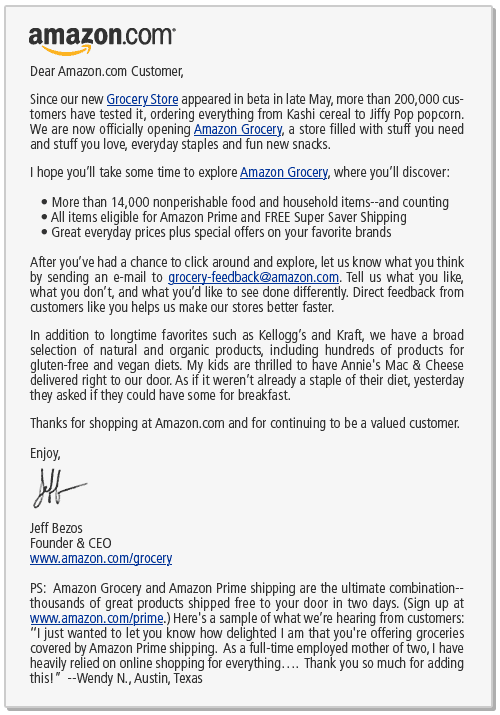Full Speed
[ October 10, 2007 ]
[ May 16, 2007 ]
[ October 6, 2006 ]
Yahoo Seeking Advertising Guinea Pigs
When Yahoo announced their Finance modules, I was concerned that they would someday start tossing in unwanted advertising.
Clearly, there is no advertising on this widget today, other than links to other Yahoo properties. And Iâm fine with that. But I have a feeling that the space at the bottom might be allocated for future ads.Today, Yahoo has issued a call for guinea pigs to test their new “advertising options” in these same modules. I am not impressed.
[ September 29, 2006 ]
Microsoft adCenter Reviewed
I first signed up for MSN adCenter when the beta was announced. I went to the site and submitted my email address to be put on a waiting list. The wait was short, it turns out. It wasn’t long before Microsoft announced that anyone could sign up for the expanded beta for the admission price one-time setup fee of $5.
When I first signed in to the site, I was disappointed that it only worked with IE. At the time, I primarily used a Mac at home, so this was a major dealbreaker. And since I had successful AdWords campains and a decent Yahoo Search Marketing campain running, I wasn’t really needing another outlet for my advertising.
Fast forward to August 5, when the adCenter website got a redesign. It was renamed Microsoft adCenter, and one of the major features was Firefox support! I had switched back to a Windows laptop in June, but with Firefox still being my primary browser, I was happy to see some support. Now I could actually use the system, or so I thought.
I created an “order”, which seems to be the equivalent of an AdWords campaign. This order consisted of an ad along with about 20 keywords. I submitted the order and was told that it would need to be subjected to editorial review next. So I checked back every week or so, each time seeing the status of my order as “submitted”.
Today, I checked again. It has been one month and five days since I submitted my first batch of keywords and ads to Microsoft for editorial approval. The order still shows the same status: “submitted”. Since I had not received any communication from Microsoft, I decided to check into things. I was expecting to see an “approved” status or similar on the order. Instead, the individual items inside had been marked “approved”, with the order remaining “submitted”. Not the result I was hoping for, but at least I knew that my keywords had been approved.
With the approval question answered, I began to wonder exactly when the campaign had actually started running. I requested this campaing to begin on August 24, but the campaign itself doesn’t really show when its ads actually cleared editorial and began running. Since this test campaign has only received 56 impressions, it could have just started today, or it could have been running all along.
Fortunately, this gave me an excuse to try out the reporting tools. A good daily report should show me when the campain began. And as it were, the ads had been running for a while. I ran a report to show all impressions for the month of September, and Sept 1 had the second highest number of impressions. So I ran a report for August. This gave me what I was looking for. My ads had been running since the 26th. So the approval process only took two days, but due to lack of communication from Microsoft and the mislabeling of my “order”, I was completely unaware.
Thinking that user error could have come into play here, I proceeded to check the email settings. My email address was there, and it was correct. The box next to “Microsoft adCenter Member Communications” was checked, so I should be receiving mail. I guess MS just forgot to send that message.
Now that I have finally overcome Microsoft’s attempts to make the adCenter completely unusable, I can form an opinion of the underlying product. In my mind, there are three metrics by which online advertising should be measured: ad creation, performance, and reporting.
Initially, I wanted to give an F for ad creation. I should have received an email when the order was approved. And the order process should not have taken two days. But knowing the limits of the system, I can get by. So for ad creation, which includes keyword adds, etc., I give adCenter a D.
Performance is right on par with what I have been seeing on Yahoo: B-. The prices are good, but there’s nowhere near as much traffic as I see on AdWords.
And finally, reporting. I was really impressed with the adCenter reports. They’re flashy, literally. Each report that I viewed contained slick, Flash-animated graphs. There were the typical CSV export options as well. These are certainly the most beautiful reports in the business. And report templating and scheduling is available as well. adCenter gets an A in reporting.
So overall, I would have to give adCenter a C+. I will probably continue to use it, but I won’t like it. I expect to be having plenty of discussions with adCenter support on how they can improve.
[ July 17, 2006 ]
[ January 13, 2006 ]
Six Apart Affiliate Program
I logged in to Commission Junction today and found that Six Apart had started an affiliate program. I supposed this has probably been around for a while, but the convenience of CJ pulled me in. Here are some samples of the ads:
[ December 6, 2005 ]
Amazon Product Previews
I’m trying out a beta of Amazon’s new web 2.0-compliant, buzzword-friendly, ajax-driven product previews on the site today. If you want to see the beta in action, hover over the following links. If not, please ignore this post.
Canon Powershot SD200
Garmin StreetPilot c330
[ October 12, 2005 ]
Yahoo Publisher Network
I received a nice surprise in my inbox this morning:
Thank you for applying to participate in the Yahoo! Publisher Network beta program. We’re excited to let you know that your application has been accepted.Naturally, I signed up as quickly as possible and pasted some ad code into my site. This process was very straightforward, much like AdSense. But after I pasted the ad code into my site, I realized that YPN is nowhere near as refined as AdSense. According to the YPN FAQ, I should have seen public service ads while waiting for the context-targeted ads to appear.
Your Yahoo! Publisher Network ads will usually begin appearing within seconds of pasting the ad code into your web pages. If no ads are available, public service announcements will be displayed. If you prefer, you may select a Substitute Color that matches your web page background so that a solid color block appears in the meantime instead.But I didn’t seeing anything. All that the YPN code provided was an empty iframe. Sure, it had the CSS for the ads in place, but there was no content inside the body of the html document. The “substitute color” option worked, but I got no PSAs. This really looked bad on my sites, so I thought that I might not get to try out YPN.
Fortunately, however, the matter was resolved within a couple of hours. I went back to my test page after doing some other work, and the ads were there. When I have some solid data on the earnings, I will write up a summary of my experiences. I’ll leave you with this for now, though: Yahoo has a long way to go to catch up with AdSense.
[ August 23, 2005 ]
[ June 9, 2005 ]
Now Appearing in the Dallas Observer
Thanks to Julie Chadwick of the Dallas Observer, the #1 weekly newspaper in the Dallas-Ft. Worth Metroplex, this site’s URL made its way onto the most read newspaper page in Dallas, the back page of the Dallas Observer.

